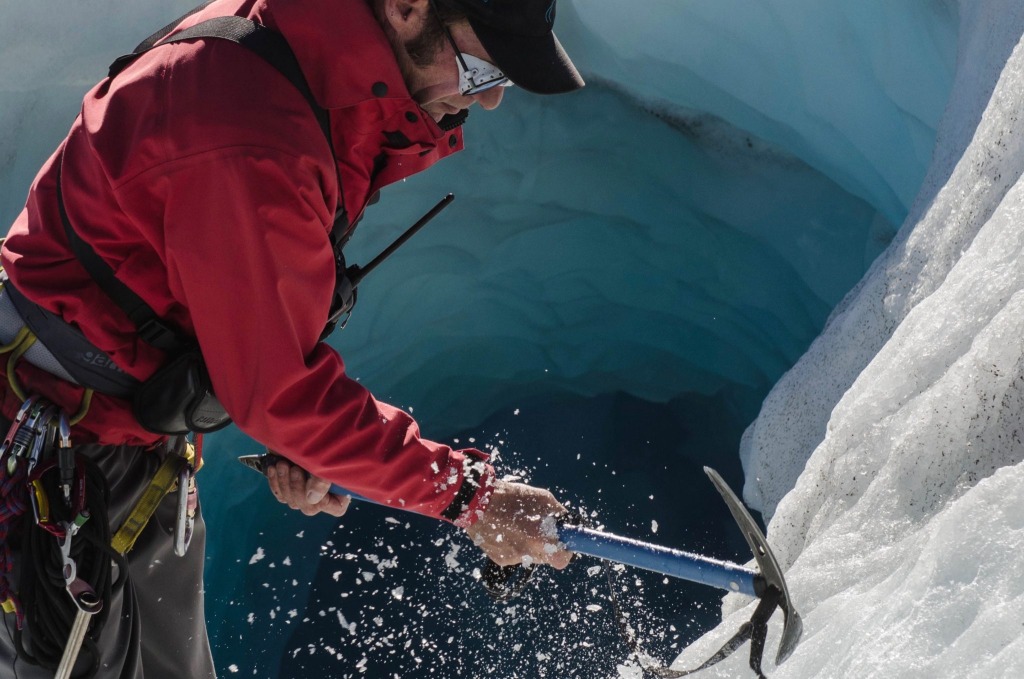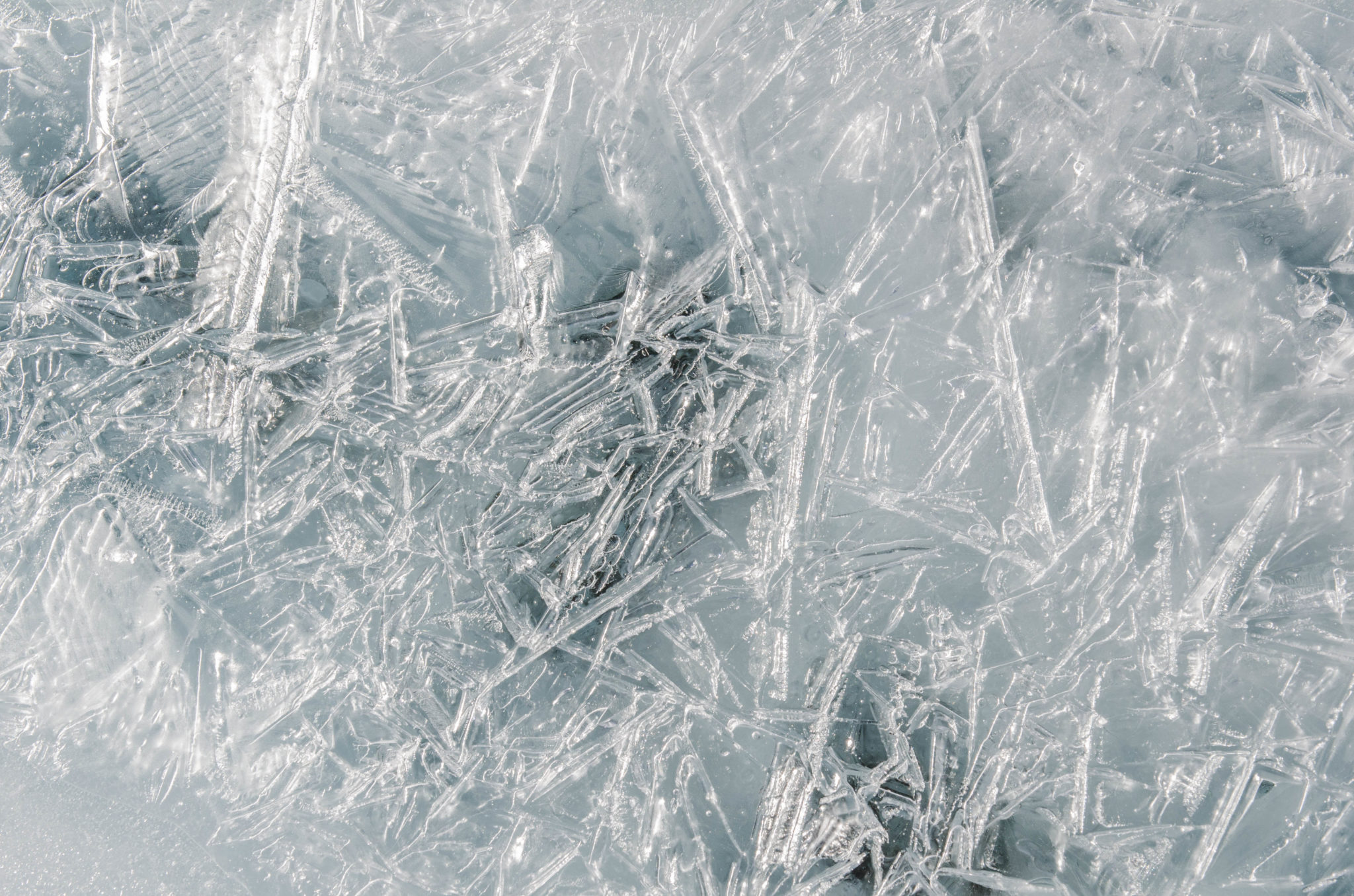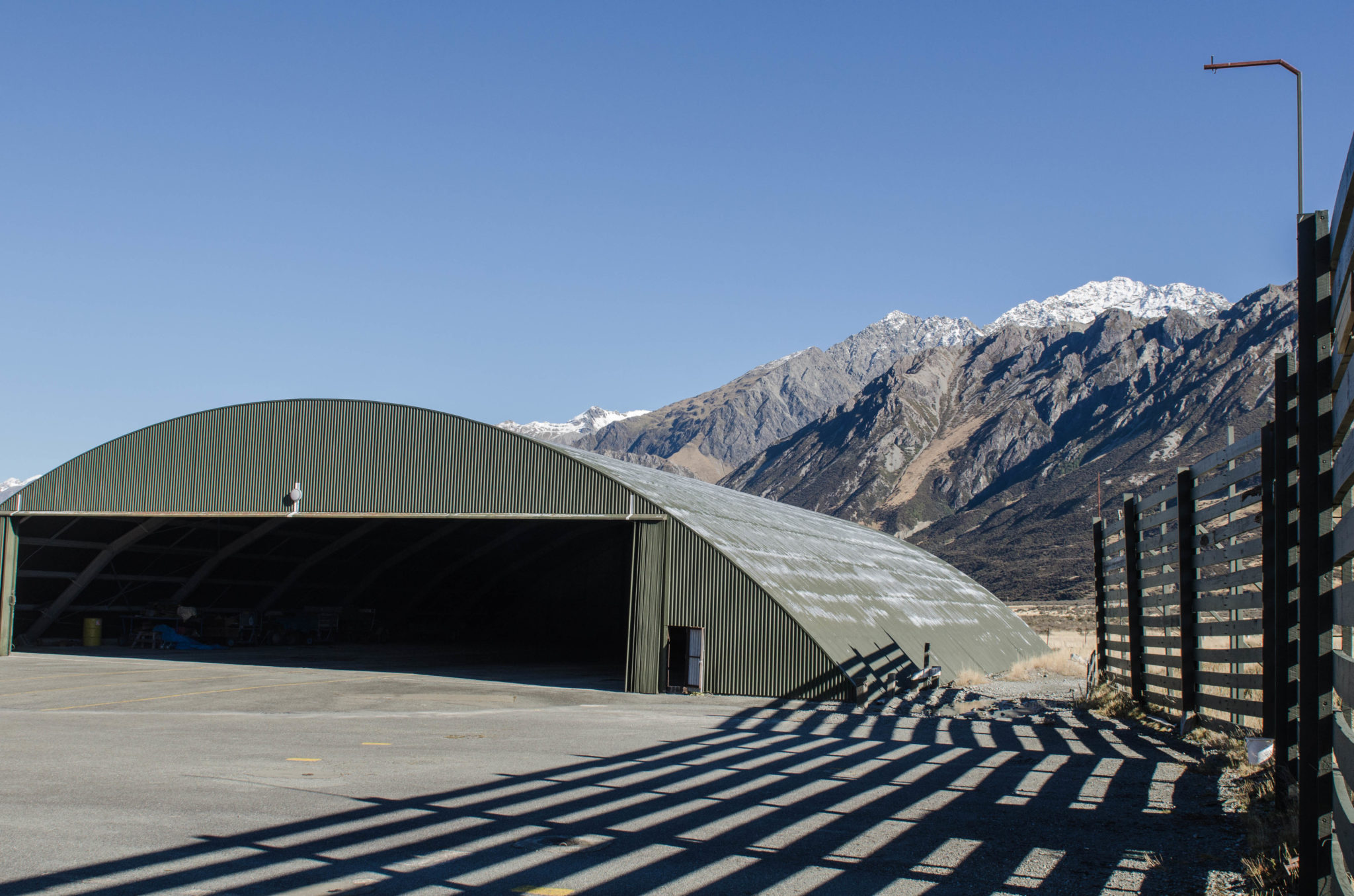New Zealand: The Tasman Glacier – a heli hike to eternity
When the ice crunches under the spikes beneath your feet, you know things are going well. A glacier hike in New Zealand is an unforgettable experience: the eternal ice, the whirring of the helicopter blades and a guide who knows Mount Cook’s glacial heart better than anyone else.

As the helicopter takes off, the endorphins really start to flow. It is a struggle to think clearly, beyond that almost physical response of, “Wow”. Even from the air base at Mount Cook New Zealand, the view of the glacier is breath-taking, defying all words. The helicopter’s six passengers – as well as the guide and pilot – all sit in complete silence, collecting their thoughts.
Before our eyes, a truly majestic massif is revealed. Mount Cook, on New Zealand’s southern island, is the country’s highest mountain. Viewed from this distance, it has an almost surreal appearance about it, like a painted model. The sun shines, the sky is clear, just the occasional white cloud completes the picture. Even the Matterhorn, some 18.000 km away, is no match for this, its big brother on the other side of the world. The call of the Aoraki, as Mount Cook is known in the language of the Maori people, is truly enchanting. To the unpractised eye, these are surely ideal conditions for a helicopter flight.
Mount Cook: All good things are eternal
This is our first attempt to reach the Tasman glacier by helicopter, but, unbeknownst to us, it won’t be our last. The helicopter’s passengers are initially oblivious to the complexities of the task at hand and the difficulty of timing a safe landing on the ice. At the outset, we blithely assume that the journey is to be a straight forward one.

The helicopter takes off with a sudden lurch. Instinctively, you find yourself grasping for the armrests of your seat, before quickly letting go again. After all, you don’t want your fellow passengers to know that you’re almost wetting yourself. Out of excitement, if not fear. The height and the ever-approaching form of the glacier massif combine to make an extraordinary impression, although the helicopter is still a kilometre or so from its destination.
Delayed amidst picturebook scenery
As a first time tourist on a helicopter trip to the Mount Cook glacier, you tend, by necessity, to assume a slightly passive mode. You follow, rather than direct. You listen, rather than speaking. And so you also overhear, as a passenger on the helicopter en route to the glacier, the conversations between the pilot, the glacier guide, and the voice emanating from the helicopter’s two way radio system. As such, even those in the cheap seats at the back are treated to snippets such as: “Look at that!” and “Oh my!”, “I’m turning back”. Followed by “Turn around immediately, that is dangerous.” The tone, with which the pilot and the glacier guide discuss the weather conditions, is superficially pleasant, but betrays an unspoken sense of concern that really doesn’t bode well. And even an untrained glance through the scratched helicopter window betrays what appears to be an ominous weather system moving in from the east.
So we turn back, at once. Without batting an eyelid. The approaching mass of clouds grows ever more menacing, as it accelerates across the Hooker Valley. It’s like a grey-white curtain of awful weather. And yet, just a little while earlier, the scene had been so beautiful, everything was in place – ready for adventure. The sun was shining, just a couple of small cotton wall clouds marred the blue of the sky. A clear view, picture perfect. Click. An outdoorsy Instagrammer would have had a field day. Instead of disembarking on the glacier, we are now heading back to the safety and relative predictability of the Mount Cook New Zealand visitor’s centre and ticket office. The approaching bad weather can be assessed from there, radio forecasts checked, patterns discussed – by the experts, at least. We tourists, meanwhile, remain seated on our little wooden chairs and we wait. And we attempt, to the best of our ability at least, to mask our ignorance. With those clouds in the sky, that strong wind, well of course we had to turn around.
Platoon in the middle of Mount Cook New Zealand
It seems that a rainy depression passed over the New Zealand mountain range within minutes, before disappearing just as quickly. Half an hour later and we’re back on the chopper, strapped securely into our seats with sturdy cross straps. These are so tight that we are left wondering whether we would crash with the helicopter, or it with us. Either way, a few minutes later we are taking off all over again. Happily, on this occasion there are no bad weather systems lurking in the wings. The air is now extraordinarily clear, almost glistening. Without sunglasses, the ultra-clear blue of the sky is unbearably bright, never mind the blinding white of the glacier on the horizon, which draws ever nearer. Suddenly, the notional extravagance of a 200 euro investment in pro Glacier glasses makes perfect sense- albeit too late.

Taking a helicopter trip to the end of the earth is a transfixing experience. You are completely overwhelmed by the natural beauty of New Zealand’s panorama, distracted by the natural might of Mount Cook and then suddenly jerked back into reality with an awareness that the copter is about to land. With a crunching thud, the helicopter comes to a rest upon the ice
Spike by spike, breathless
„Go! Go! Go!“ shouts a voice, seemingly from hundreds of metres away. On closer inspection, this turns out to be our glacier guide, who is in fact standing no more than 80cm outside the door of the chopper, urgently gesturing at the passengers to jump out. One by one. And here is another important lesson for our group of glacier explorers: you take turns to disembark from the helicopter. Everyone watches out for the others in the group. You stand, and fall, together. The equipment, mostly backpacks and climbing tools, is then pushed out with a final thud, before the force of the rotating blades can blow them away. It’s almost reminiscent of Oliver Stone’s epic Vietnam film from the 80’s, Platoon.
And now things really start to happen. Finally we get a chance to put into practice all of the guidance and instructions reiterated by our guide, and embark upon an ascent of the Tasman Glacier on Mount Cook New Zealand. Clipping the spikes on to the shoes, folding them down. A task, which had seemed so straightforward and effortless earlier, back in the warmth and comfort of the base camp. Yet up here, everything is transformed. Suddenly there is no room for error, the smallest movement counts. Not just your own steps, but also those of your companions. Everyone is looking out for each other. All for one, one for all. Although truth be known, we’re no longer sure who the other participants are and it doesn’t even seem to matter.
Our little armada of eight sets off. One after the other. The risk of a dangerous misstep is minimised, if one treads in the footsteps of those in front. In this thin air, high above the Tasman Glacier, this still seems logical. Moving with the hiking tools is a struggle for some, this equipment seems so strange and unfamiliar.

Glaciers are impenetrable and mysterious. Once you have seen the full majesty of the immense mass of ice from high up in the air, the Tasman Glacier can appear comparatively prosaic when viewed up close. We are small. We learn, as visitors to the glacier, to accept our insignificance. A more beautiful sense of meaninglessness can barely be imagined, than that which one feels in the presence of the glacier. The eternal ice transports the visitor to an unfamiliar state of mind. As though it wanted to say: „Hey man, there you are at last. I’ve been waiting an eternity for you.“
And so we attempt to live up to the importance of this moment. We follow Ant, our scrupulously experienced glacier guide, step by step. After all, he knows exactly what he’s doing. As sure-footed as an ordinary ant, his namesake. It seems a promising moniker. This is someone who knows this place like the back of his own hand – and yet no-one truly knows a glacier, in the ordinary sense. Constantly changing, they remain ultimately unknowable. The Tasman glacier melts, shifts and stretches with each passing day. Nothing remains the same. From one day to the next, its form can be transformed, 100 years or a day means much the same. Today, Ant can accompany his guests along this path through the ice, tomorrow, it may have closed and another path opened up in its place. So transitory is the eternal ice. It changes, it lives.
A man made of ice
Such wisdom as this makes Ant the perfect guide. And it is partly because of him that the hike across the glacier is such a highlight. Not just amidst the pages of our New Zealand travel diary, but as a moment in our lives. Destined to find a place among those very special, distant stories that we will one day tell to our children’s children, as they nestle close and listen.
Ant knows this, too. Perhaps that explains the permanent gleam in his smiling eyes. Somehow knowing, somehow wise. So we climb back down, tracing along crevices which Ant discovered only yesterday. We traverse glacial caves, which may be hundreds of years old – or which perhaps were formed only last week. We grasp at hooks and brackets which Ant secured into the ice early yesterday morning. He couldn’t sleep, he tells us, and so he called his mate the helicopter pilot first thing, and asked him to fly him up on to the glacier.
Two hours spent on the ice passes like 15 minutes. Einstein was absolutely right: time is relative. Our time on the eternal ice has not just passed relatively quickly, but definitely too quickly. A short break follows, a rest and a snack. The setting is unforgettable, it overwhelms. It’s barely possible to compose a meaningful sentence. Suddenly, a droning sound emerges from the distance. It draws nearer, almost menacing in its approach. One might almost become fearful, were it not for the reassuring, knowing smile on Ant’s sun-kissed face. The lines are deeply etched in his face, like milestones from a long-forgotten time. The helicopter appears on the horizon.
We kneel down, like well-versed soldiers. The spikes on our shoes are duly clipped, folded, removed. We press our belongings firmly to the ice, as Ant has told us to do. The gust created by the whirling blades swallows up our speech like a combine harvester. Silently we climb aboard the chopper and assume our possessions. One final glance at the majestic Tasman glacier. It retreats in its blue-white ice, engraved upon the memory. For eternity.

No comments yet.
Be the first to comment on this post!